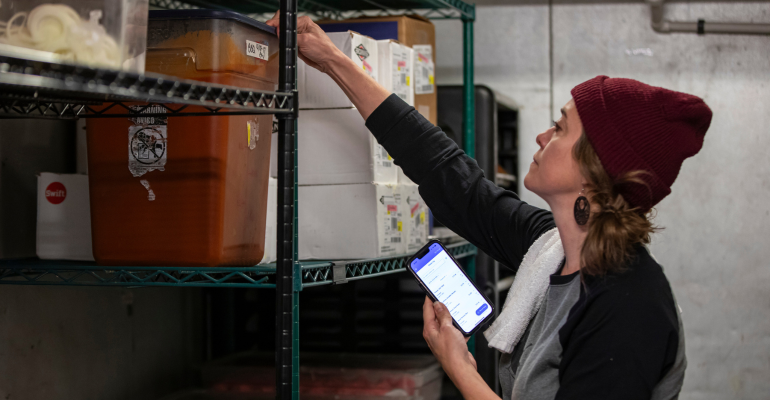Sponsored by MarginEdge
Food waste is a serious problem in the restaurant industry, with an estimated 40% of all food in the U.S. going to waste every year. This results in a staggering loss of $162 billion in revenue, according to the Department of Agriculture. While not every guest makes it into the clean plate club, the biggest culprits for this problem often start in the kitchen.
Whether it's a batch of guacamole that doesn’t get used, Chef forgetting their guest asked for sauce on the side resulting in a wasted plate, or even cutting salmon filets to nine ounces instead of eight – it all adds up.
Thankfully, newer technologies, like inventory management systems, are providing restaurants with powerful tools to help combat food waste and boost their bottom lines. These systems not only give operators a streamlined method to track inventory levels, but when integrated with sales data can even help operators make ordering predictions based on historical trends. This helps restaurants accurately order ingredients and reduce the risk of over-purchasing.
Let’s first explore where waste may be happening and how big of an impact it has on our industry.
Food waste - just how bad is it?
Food waste is a significant issue for the restaurant industry. It’s estimated that 48% of food waste in America alone is generated by restaurants each year. This number is not only concerning for the environment, but it's also costing businesses a significant amount of profit. A single restaurant can save thousands each year by reducing food waste through better inventory tracking and waste reduction techniques.
Where does it happen?
Waste in restaurants can occur at multiple points. It often begins with overordering, which can lead to inventory spoilage before your products even reach the kitchen. During prep, improper portion control or a lack of skill in executing recipes can result in excess food trimmings and byproduct losses. The kitchen can also see waste due to overcooking or errors that render dishes unservable (like forgetting that sauce was meant to be on the side).
During service, guest waste from uneaten food or anything returned on the plate also contributes to the overall wastage. Identifying these critical points of waste generation is the first step in creating waste reduction strategies that will truly work for your operations.
How does technology fit in?
Inventory management systems are designed to track inventory in real-time, providing business owners with up-to-date information about the quantities of and purchasing data for ingredients and foods they have on hand. This information allows restaurant operators to make better decisions about what, when and how much to order.
Committing to taking regular inventory checks with an inventory management system is the first step in helping prevent waste. Taking regular inventories ensures that proper storage techniques are being followed, food is being used in the correct order (First In, First Out or FIFO), and that the food is being handled and stored safely. Regular inventory checks, even just of key ingredients, also help restaurants order the right amount of food, resulting in less waste over time.
What exactly can inventory management systems do to prevent and lessen waste?
One of the key features of inventory management systems is their waste logs, which allow operators to track both raw and completed waste (like prepared or menu items), identify reasons for waste and take corrective action. Waste logs provide detailed records of what’s being wasted, when, and the reason. This information is invaluable in helping restaurant operators make informed decisions about how to reduce waste, leading to increased profits.
In addition to waste logs, some inventory management systems also provide Actual vs. Theoretical (AvT) Food Cost Variance data, which helps restaurants pinpoint products that are being wasted at higher amounts. By tracking AvT data, restaurant operators can see exactly where their cost of goods sold is higher than it should be, and take corrective action to reduce waste. For example, if a restaurant is over-pouring drinks or even if theft is occurring, calculating the AvT data will help detect those issues.
Food waste is a major issue for the restaurant industry, but it's not insurmountable. With the use of modern technology like inventory management, restaurants can more effectively track inventory and reduce waste in their businesses. Regular inventory checks, waste logs, AvT data, and proper storage techniques can all help restaurants save money and reduce waste, leading to increased profits and a more sustainable planet. By embracing technology and focusing on reducing waste, restaurants can make a positive impact on both their bottom lines and the environment.
Click here to get started with a free food waste calculator, or to gain better insights into streamlining your inventory management, reducing food waste, and seeing how much lowering food costs by a few percent can save you each year, visit MarginEdge.



